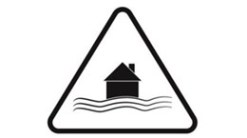By: Dr. Donald E. Wetmore
As a full-time Certified Contractor Business Coach for the last twenty-five years, I have been asked so many times, “How much does your training cost?” I have learned to reply, “Would “no charge” be too much?”
Training is not a cost. It’s an investment. It really doesn’t matter what we pay for an investment. What’s relevant is what we get in return. One of the best ways to jeopardize a company’s future in today’s world and increase the probability of troubled times is to look at training as a cost and pay the price of not training or provide substandard training that operates only as a Band-Aid for the training requirements. The most expensive training is often for the lowest bidder that does not deliver training that helps people to make changes to give an adequate return on the training dollars spent. Ineffective, inexperienced training at any cost is not a bargain.
It’s a simple principle. An organization’s staff is where they are currently, in terms of competence and success, in direct relationship to what they know and how well they apply what they know. The more we learn and the more we apply what we learn, the greater our success and thereby, the company’s success will been.
Some like to quantify the results from training. Here’s a good example. A person being paid $50,000 per year who is wasting just one hour per day is costing the company $6,250 per year (excluding benefits, overhead, opportunity costs, etc.). If that person can learn how to re-capture just one productive hour per day, that translates into a payback to the organization of $6,250 per year. If there is a crew of 25 people involved in the same training and they all receive a similar benefit, the return to the organization is $156,250 per year. (And this does not include other benefits to the organization such as profitability, reduced turnover, improved morale, enhanced teamwork, better customer service, greater creativity, etc.) Over five years, the payback is $781,250. What should an organization invest to achieve that return and payback?
Many find it difficult to get the time for training. This is another false economy. (They are so busy doing it the wrong way that they cannot take out a little time to figure out how to do it the right way.) When someone says they cannot afford to take time to go to training I know they are looking at that training as an “expense” and not as an “investment”.
Not so many years ago, training, beyond showing employees the basics of doing their job, was an option for most organizations. Today it is no longer an option. If any of us continues to do what we do the same way, without improvement, within five years many of us and our companies might become obsolete. Why? Because our competitors are helping their people to become more effective through training. If we look closely at the GC’s and Subs that are doing well in the long run, they almost always have in place a well thought out and executed training program for their people. They understand that the price for not training is the real expense of training.
Dr. Donald E. Wetmore
Certified Contractor Business Coach
Productivity Institute
127 Jefferson St.
Stratford, CT 06615
(203) 386-8062
(800) 969-3773
Email: ctsem@msn.com
Visit Our Time Management Supersite: http://www.balancetime.com
Follow
me on Twitter at: http://www.twitter.com/timeguy
Follow me on
LinkedIn: http://www.linkedin.com/in/timemanagement
Copyright 2019


